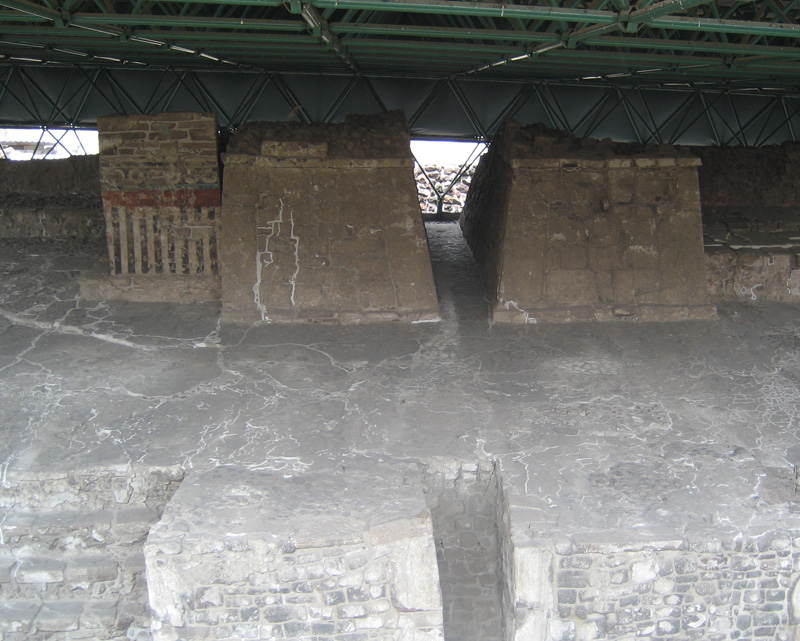
Templo Mayor (8) |
 |
|---|
Source: WTL© digital photograph (2009) taken on site at the Templo Mayor, Mexico City. Comments: Under a protective excavation roof, we see here part of the second phase of the Templo Mayor, which was constructed ca. 1400 when Tenochtitlán was subject to a neighboring tribe at Azcapotzalco. All that has been exposed is a part of Phase II's base and these two small altars (adoratorios), which, like the entire Templo, are devoted to Tláloc and Huitzilopochtli. These altars are made of solid stone, covered with stucco, and decorated with multi-colored painting. Originally these altars were topped with battlements (almenas). In its seventh and final stage, the room inside the large "temple" to Huitzilopochtli contained a huge effigy of this god. The effigy was made from amaranth seeds and glued together with honey and the blood from human sacrifices made in front of the statue. Inside the effigy were bags containing jade, bones, and amulets, the purpose of which, according to the Aztecs, was to provide sustenance for the god. The effigy was reconstructed each year and was dressed in rich clothing; its head was covered in a mask made of gold. When the annual ritual celebration dedicated to Huitzilopochtli ended the effigy was torn apart and thrown down the pyamid for the worshippers to eat. Humanities Issue: Consider the progressive elaboration of the worship of Huitzilopochtli over more than a century of construction and reconstruction of the Templo Mayor. |
|---|
 |